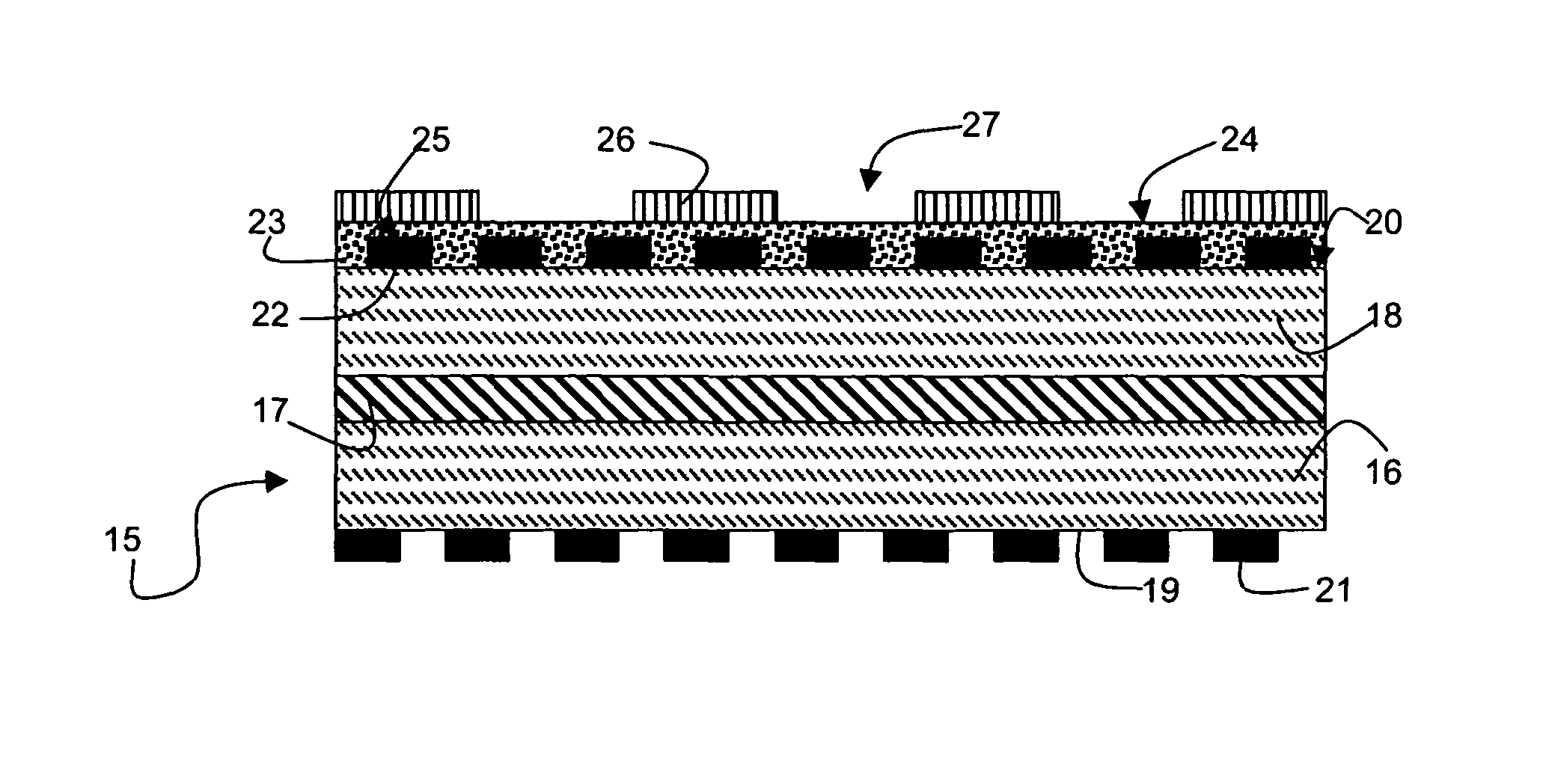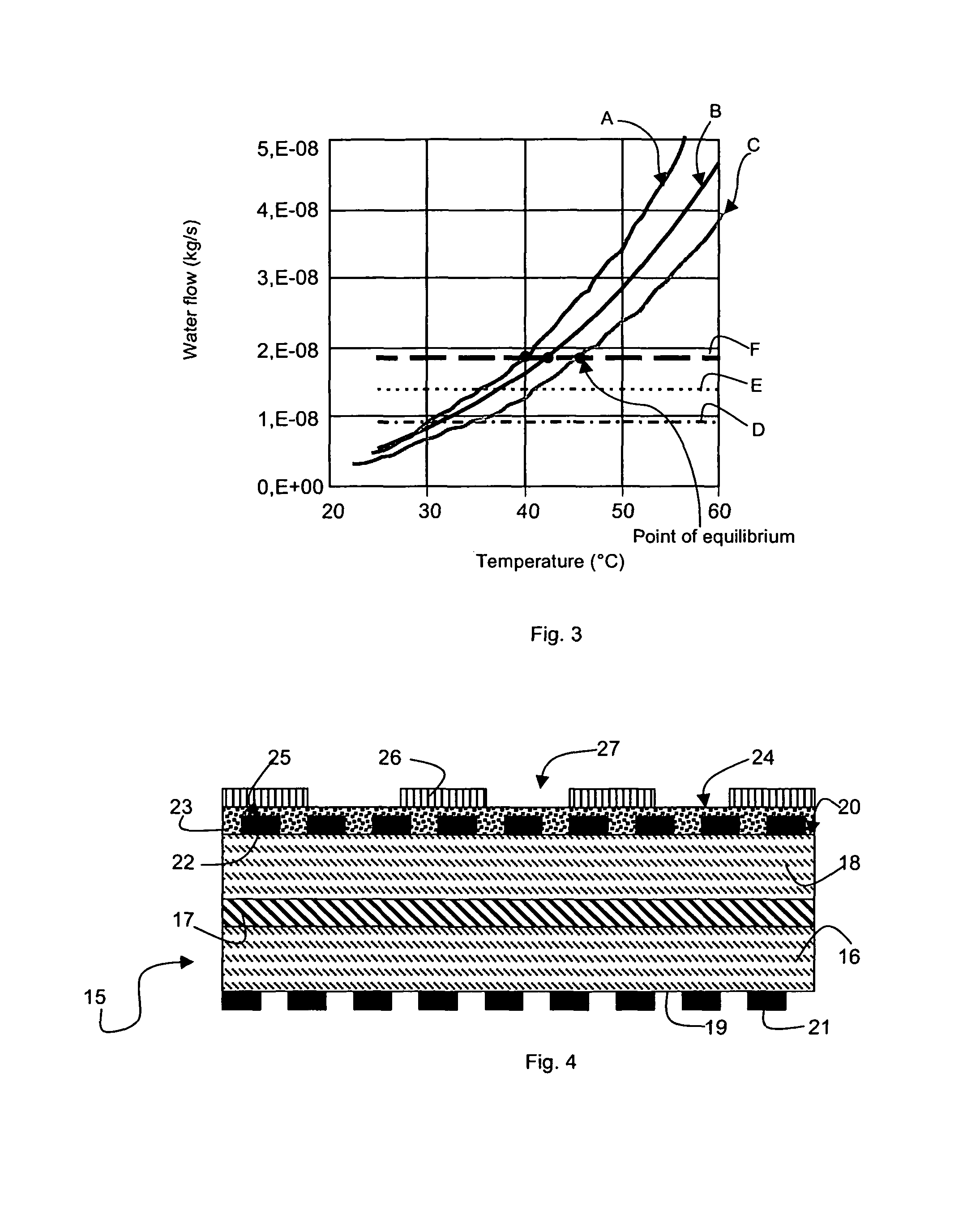Fuel cell comprising an assembly capable of managing the water generated by said cell
a fuel cell and assembly technology, applied in the field of fuel microcells, can solve the problems of reduced operating capacity of the cell, cell giving rise to certain problems, and insufficient solutions, and achieve the effect of optimizing performance and managing humidity in the fuel cell
- Summary
- Abstract
- Description
- Claims
- Application Information
AI Technical Summary
Benefits of technology
Problems solved by technology
Method used
Image
Examples
Embodiment Construction
[0019]To obtain a fuel cell presenting good performances, it is preferable for the quantity of water removed in liquid form and / or evaporated not to be greater than that produced by the cathode, so that the electrolytic membrane is not dried out due to lack of water.
[0020]The quantity of water produced by the cathode does in fact depend solely on the fuel cell operating current whereas the quantity of water removed depends on the temperature in the fuel cell and on the wettability of the heat exchange surface between the stack and the outside of the fuel cell.
[0021]For illustration purposes, in FIG. 3, curves A, B and C represent the variation of the evacuated water flow in an electrochemical cell versus the temperature of the fuel cell, respectively for three type of heat exchange surfaces. The heat exchange surface corresponding to curve B is a reference heat exchange surface corresponding to the outer surface of a graphite cathode. The heat exchange surfaces corresponding respect...
PUM
| Property | Measurement | Unit |
|---|---|---|
| thickness | aaaaa | aaaaa |
| operating currents | aaaaa | aaaaa |
| operating currents | aaaaa | aaaaa |
Abstract
Description
Claims
Application Information
 Login to View More
Login to View More - R&D
- Intellectual Property
- Life Sciences
- Materials
- Tech Scout
- Unparalleled Data Quality
- Higher Quality Content
- 60% Fewer Hallucinations
Browse by: Latest US Patents, China's latest patents, Technical Efficacy Thesaurus, Application Domain, Technology Topic, Popular Technical Reports.
© 2025 PatSnap. All rights reserved.Legal|Privacy policy|Modern Slavery Act Transparency Statement|Sitemap|About US| Contact US: help@patsnap.com



